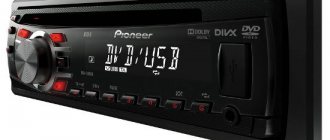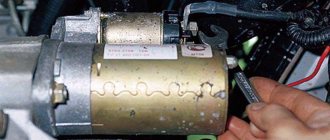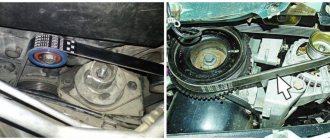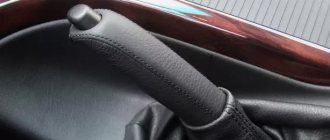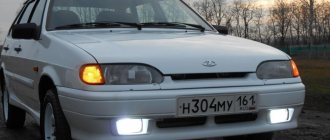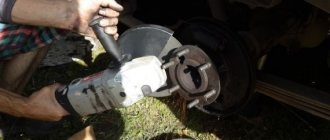What is LDWS and what is it for?
This is a system that uses special sensors to monitor conditions on the road. If the driver intentionally or unintentionally (for example, having fallen asleep) moves from one lane to another, the LDWS function will notify him with a loud sound signal. The main purpose of this function is to warn drivers who have fallen asleep or are distracted while driving about the risk of colliding with vehicles moving opposite (without deliberately driving into the oncoming lane or side of the road).
Is this feature needed?
Of course? needed! Yes, even if you are not a truck driver
Agree, each of us “sinned” while driving, switching our attention to calls and correspondence (which is more than dangerous). This is precisely why this system was created, to notify you, as a distracted driver, that it is time to pay attention to the road!
How it works
There are two options: an on-board computer and a camera - they are the ones who monitor the correct movement. In any case, the device signals about changing lanes while driving with an audible signal (but only if the turn signal was not turned on first).
Are there any disadvantages
Despite all the advantages of this system, it still has a rather big drawback - hypersensitivity and, as a result, intrusiveness). Reminder! As mentioned above, this system is ideal for people planning a long trip, but not for those who often move exclusively around the city. In simple terms, thanks to LDWS, novice drivers will not be delighted due to the system's constant alerts about changes in the direction of travel. BUT! Drivers with “experience” will only say “yes” to this system because of its ability to control the vehicle’s movements in one line! Another big plus lies in the fact that it allows the driver to control the situation even in cases where this is impossible (snowfalls, fog, minimal visibility, etc.).
Advantages
- High power camera;
- Powerful processor;
- Wide angle lens.
Naturally, every vehicle owner must understand that all responsibility for his life, as well as the lives of passengers, primarily falls on him (and not on any new auxiliary systems and functions). Only your experience, attentiveness, calmness, and speed in response are the main “storeroom” for trouble-free movement around the city and beyond.
Note to drivers
Although this feature is easy to set up, it is best used when going out on the trail. In the city, it will work too often (due to changes in the line of travel), which, of course, will not be to the “taste” of the car owner. It is also worth noting that this function is more than useful for beginners who have trouble understanding the dimensions of their vehicle!
If you want to buy an AutoPASS E6 radar detector, see the model review
The AutoPASS E6 radar detector is an inexpensive Chinese radar detector, its cost is about 20 dollars. At this price, the device has all the standard functionality: it catches in all ranges used in Russia: X, K, Ka, the scale is expanded due to the Ku frequency, which is exotic for our country. To prevent the processor from being overworked, it is better to immediately turn off everything that is not in use. In addition, the detector responds to short shots from Ultra-X, Ultra-K and POR radars. To prevent vigilant highway patrol officers from detecting the presence of this device in your car, it is protected from VG-2 and Specter scanners and direction finders. This must be taken into account when traveling abroad.
What we can thank the Chinese engineers for is the use of a particularly sensitive VCO waveguide, which ensures good reception of all systems. However, according to reviews, the device reacts to everything, and even switching from Highway to City mode does not help. It is also noted that frequencies are not always displayed correctly on the LED display, which may result in another fine.
The Chinese were not pleased with the high-quality laser receiver; the optical lens covers only half a circle of 180 degrees in the direction of movement, and radar lasers hitting the back will not be detected. But nevertheless, the reception range outside the city is more than two kilometers; in the city limits this value decreases.
Additional functions include four-level adjustment of display brightness and signal volume, which will definitely come in handy in a city where there are a lot of false positives. The device is attached with a suction cup to the glass or with Velcro to the dashboard. Do not forget about its correct installation, so that the road is visible to the lens and horn antenna, and there are no foreign objects between the radar detector and the glass.
This device is one of a kind: at a low cost it has good characteristics, although in the city it will constantly disturb you on business and idle time. We can recommend it to novice drivers who adhere to the rules and rarely exceed the speed limit.
If you like fast driving on city highways, then it is better to buy some more expensive analogue. With a high-speed driving style, it will pay for itself in a few days.
ravid.ru
What is loop recording in a car DVR?
DVR NaviteL R200.
Best offer up to 3 thousand Car recorders usually support two video recording modes: continuous and cyclic. Continuous mode allows you to record video in one large file. This size can only be limited by the available memory of the device (internal or external). When the free memory is full, continuous video recording ends.
The advantage of this type of video recording is the absence of gaps in the video even for short periods of time. The obvious disadvantage of continuous recording is that it stops when the memory is full. In some cases, the driver is even deprived of the opportunity to quickly reconfigure the DVR to continue filming.
Against this background, the cyclic video recording mode looks much more functional. It has two significant features:
- Recording is carried out not as a continuous file, but in fragments that are small in volume and duration.
- As soon as the device’s memory is full, the oldest (by recording time) files begin to be deleted. A new video is recorded in the free space, and the whole cycle is repeated again.
The cyclic video recording method also has its positive and negative sides. The positive aspects include the independence of the fact of shooting from the availability of free space in memory. Video recording will be carried out in any case, even if the memory is full.
A negative aspect of cyclic recording is the inability to save videos of long duration and volume. Only the most recent small files will be saved.
Some DVRs (especially older models) are not able to provide continuous video when recording cyclically. This refers to gaps in the picture at the junctions of fragments adjacent in time to recording. Modern DVRs, as a rule, do not have this drawback. Fragments are recorded in such a way that the recording of each subsequent file begins when the recording of the previous one has not yet finished. It is this overlay of video files that ensures that there are no gaps.
The duration of fragments during cyclic recording, as a rule, does not exceed ten minutes. There are no standard values for the duration of video fragments, and each recorder manufacturer sets them independently. Setting the time during which one fragment will be recorded occurs in the DVR settings. The user can choose the duration that he deems necessary.
Operating the DVR in cyclic recording mode allows you to implement another important and useful function for safety. We are talking about protecting video files from being destroyed or overwritten as a result of the operation of the G-sensor (or shock sensor). This sensor monitors the position of the vehicle in space and the smoothness of its movement. With any sudden changes in these parameters, the sensor marks the video files that are being filmed at the moment, thereby protecting them from possible destruction. The driver does not have to worry about the safety of video files and at the same time he has full access to them.
When saving fragments in the DVR memory, they are assigned names containing numerals in the order in which they were recorded. This ensures a quick search for the desired location in the video if you need to watch it.
The cyclic recording method is most popular among car owners. It provides uninterrupted recording of events into memory of any size. In addition, the safety of video files received in emergency traffic situations is ensured.
In this video you will see a live example of this function on the device.
Features and purpose of the HDR function
HDR (translated as “high dynamic range”) is a special technology that enhances the grain and contrast of video recordings. Its use allows you to make the picture more saturated and bright, increasing sharpness.
This is a function that will improve the picture obtained in adverse environmental conditions. In particular, it neutralizes the negative impact of bright sunlight, preventing image flare. The quality of videos shot in the dark also improves significantly. Thanks to the use of this technology, the driver receives a clear picture on which any details can be seen: road markings; number plates; the faces of pedestrians and other drivers, as well as a variety of prohibitory signs. HDR settings are made using the menu, function keys and display. You just need to select the item responsible for adjusting the image.
Important setting in car DVR Exposure
What parameters and how to choose a good DVR for a car?
One of the most important settings on a car DVR that allows you to get a high-quality picture is exposure. Incorrect exposure can ruin video frames, regardless of the ambient lighting conditions in which they were taken. The video may be darkened or, on the contrary, overexposed; problems may appear both throughout the entire frame and in a separate section of it, and so on.
What is exposure in a DVR, and how does it affect video quality? Exposure is a setting that allows you to change the amount of light that falls on the camera matrix and actually forms an image on it.
In clear sunny weather, a lot of light enters the camera lens, and if the amount of this light is not reduced, the picture will most likely be too light, even faded. At night, unadjusted exposure will result in overly dark frames. There are several ways in which you can adjust the flow of light.
- Changing the amount of time light is exposed to the camera sensor. This is the so-called shutter speed, that is, the time during which the electronic shutter of the DVR camera is open to form one video frame. It is clear that the less time the shutter is open, the less light will fall on the matrix and vice versa. Therefore, the brighter it is outside when shooting, the shorter the shutter speed should be.
- Changing the size of the aperture, that is, the gap in the lens through which the light flux hits the matrix. A larger aperture also provides more light passing through the camera lens.
As a rule, in car video recorders, exposure adjustment does not imply separate adjustment of shutter speed and aperture. The exposure itself is adjusted, and the parameters of both shutter speed and aperture change accordingly. The exposure level can vary from the minimum value, which is recommended to be set in sunny weather, to the maximum value, used in low light conditions.
An important factor affecting video quality is the characteristics of the camera matrix on which the image is formed. These are its dimensions, number of pixels, sensitivity to light flux. Naturally, these parameters cannot be adjusted during operation of the DVR; each matrix has its own characteristics.
High-quality matrices from well-known manufacturers have high sensitivity and consist of a large number of dots (pixels). This ensures the possibility of high-quality shooting in any conditions, both in low and excessive lighting.
Recently, some models of DVRs are equipped with the WDR function, which does not directly affect exposure, but improves video quality by changing the exposure time when shooting one frame. When the WDR function is activated, the DVR makes two copies of each individual recording frame: one version of the frame with a short shutter speed, the second version with a long shutter speed. In the final video, both of these options are combined, and the resulting picture will be practically devoid of the shortcomings of individual frames.
Setting the exposure is very important to get truly high-quality video. The driver should make the necessary changes to its adjustment for any changes in external lighting. It is quite possible that to obtain high-quality video you will have to experiment with exposure settings for a particular DVR.
Exposure metering mechanism
Error e05 for Canon mp250 mp280 printer reset e05
Depending on the set mode, the exposure meter measures exposure and transmits the received data to the camera processor. The processor analyzes the information and exposes the image using software algorithms.
Modes for measuring the brightness of an object in digital cameras are selected either by the photographer during manual control, or by the camera microprocessor during autoexposure.
Automation provides satisfactory image quality in most cases, however, to obtain photographs of a high artistic level, you need to know and understand what exposure metering is and how to use it in practice.
There are several types of exposure metering:
- Spot metering - In this case, exposure metering is carried out on a limited area of the frame (1-5% of the entire image), usually in the center. The brightness of other areas is not taken into account. Thanks to this, the measurement accuracy in the selected area is very high, which ensures its correct exposure. Typically used for photographing a single subject against a uniform, darkened background, when it is required to obtain a clear, high-contrast image. Complex mode used by professionals.
- Center-weighted (average) metering - Metering is carried out within the central area of the frame, limited by the viewfinder markers. The measurement area ranges from 60% to 80% depending on the camera model. This mode ensures optimal use of the most sensitive areas of the matrix, since the ISO of the photo scanner gradually decreases from the center to the edges. The mode is ideal for portrait and reportage photography.
- Partial measurement - Not available on all cameras. This is a mode in which the area of the frame on which the metering is performed (10-15%) is larger than with spot metering, but smaller than with center-weighted metering. It is used when it is necessary to photograph an object, ignoring excessive brightness or, conversely, strong shading of the edges of the frame. In this mode, the detail of the image can suffer greatly (especially at the edges).
- Matrix (multi-zone) measurement - The most common measurement method, which is installed by default in the automatic modes of most cameras. It consists in the fact that the frame is divided into several zones, in each of which the illumination is measured. Then the processor brings all the data together, calculates the average illumination value and, based on it, selects the exposure. In most cases, it provides good image quality, but in difficult lighting conditions it can lead to exposure errors. Suitable for beginners at the beginning of their acquaintance with photography.
How to properly configure the DVR yourself date and time
How to properly install a DVR, choosing a location and connecting to the cigarette lighter
- Setting the setting language. We exhibit - Russian;
- Recording permission. Here you can configure, in addition to the resolution itself, the number of frames per second. The ideal option is Full HD 1920×1080 30p. In some cases, the manufacturer may recommend setting other indicators; Set the camera rotation. Here you can select the options rotation, top-bottom. With a standard camera installation, the “top-bottom” indicator is selected;
- Adjusting the length of the recording cycle. Most models have the ability to set time periods for one file from 1 to 45 minutes. For greater convenience, it is recommended to select a period of 5 minutes. In this case, after taking up all the space on the memory card, new segments will be recorded over the oldest recordings;
- Be sure to turn on the time function. This may be necessary if there is a need to dispute with the insurance company or another participant in the accident in court. Find the time tab, usually there is a “time stamp” mode. It should be switched to the ON position. Next, set the date and time. Some models allow you to synchronize time via satellite;
- The light frequency allows you to adjust the lighting flicker filter. In our country, lighting is used with a frequency of 50Hz, we set this value;
- Auto-record. This function allows you to turn on the camera when moving within the field of view of the sensors. This way you can control what is happening to your car while it is parked. Don't forget to set the shutdown time. It is recommended to do 30 seconds after the end of the object's movement;
- Setting up a GPS receiver. This allows you to display movement speed and coordinates on video. Please note that not all DVRs have this capability;
- Setting up the G-sensor. This is necessary to protect the recording in case of an accident or when driving on bumpy roads. When driving on poor surfaces, it is recommended to disable the function completely;
- For use in winter, it is advisable to delay the start time by 10-20 seconds. This will allow the camera to turn on only after a certain period of time after the engine starts. The function is also useful in case of ignition problems;
- Setting the exposure. It is better to choose automatic;
- We set the contrast to the “normal” position, and also do the same with sharpness and brightness;
- Day and night exposure. Automatic mode is suitable for daytime operation. Night exposure can be turned off.
- If you leave it on, the camera will independently select the exposure mode depending on the time of day.
Operating instructions for the Full HD 1080p DVR. Briefly about the main thing
- DVR;
- Car holder with suction cup;
- USB-AV cable;
- HDMI cable;
- Charger (12-24 V);
- In addition, a 4 GB flash drive may be included.
- Permission. The higher this indicator, the higher quality the recording will be. It is not recommended to use maximum quality with a small memory card installed;
- Date and time, timestamp;
- Recording cyclicity. It is usually recommended to divide files by 5 minutes;
- Scenario. Here you select the shooting mode. It is best to select "auto". In this case, the recorder will independently select the appropriate mode, depending on the lighting;
- Show coordinates. This will allow you to prove, if necessary, that you were in exactly that place.
AutoFlit.ru
New opportunities
The DVR is no longer the same... It can no longer only watch the movement... Now it can do much more! For example, thanks to the FCWS system, the driver will be warned by an audible signal that he is too close to the car in front. That is, this system allows you to maintain the “correct” distance in order to prevent a collision. And the LDWS system, which is synonymous with safety, will not allow the driver to violate the limits of his trajectory (if the driver falls asleep at the wheel, the system will wake him up with an audible signal, thereby notifying him that he has moved from his line to another).
GPS module
The navigation function is necessary to track the vehicle's movement with reference to map coordinates. This addition allows you to see the movement of the car on the route diagram, simultaneously synchronizing with the camera recording. Thus, the track receives a video image with data about the time and location of the action.
By setting the navigator parameters properly, the user will receive good help on the road:
- The standard system is focused on maps that quickly become outdated and lose relevance until the next update. It would be optimal to install a cloud-type kit, using Yandex.Navigator as an example - information is constantly updated and you can download a file with maps more often than the official update is released.
- The guide offers travel options. If the driver knows the area better, then you should not blindly trust the readings of the device. Or manually build a route based on your preferences.
- You should not set the settings to maximum values and accuracy: movement will be influenced by too many external factors, which will complicate the construction of a route and increase the size of the tracking file.
What is the G-shock sensor in a car DVR?
The shock sensor (sometimes also called g-shock, from the English word “shock”, which actually translates as impact) has long become an integral attribute of car DVRs. It is a component not only of expensive devices, but also of purely budget gadgets with a minimal set of additional functions.
The main task facing this sensor is to ensure the safety of video files that are obtained during sudden changes in vehicle movement.
The concept of a “sudden change in movement” does not necessarily imply a blow to the car body as a result of an accident. This could be sudden braking, a strong shake on a bad road, a skid, a rollover, and so on.
But for any driver it is important that the video is saved specifically in emergency road situations, since in many cases only it can serve as proof of innocence
The need for automatic video protection is also explained by the fact that usually immediately after an accident, the driver, being in a state of emotional shock, may forget to do it manually. And continuing loop video recording will destroy the necessary files.
The g-shock sensor constantly monitors the vehicle's position in space. Every sudden change in movement in any plane is recorded by it. At the same time, a special electronic mark is applied to the video file currently being recorded, which prevents the DVR from deleting it when re-recording.
In the DVR settings, you can set the time before and after the event, and the video that was recorded during these time intervals will also be protected from destruction. As a rule, all video files received when the shock sensor is triggered are placed in a special folder (the name of the folder can be different “Event”, “Sobytie”, “Event” and so on). When recording video in loop mode, files in this folder will not be overwritten.
The driver can also adjust the sensitivity of the g-shock sensor. Typically, three levels of sensitivity are available: high, medium and low. The degree is selected by the driver in the DVR settings menu.
For greater reliability, all video obtained when the shock sensor is triggered is automatically provided with a date and time stamp. This will happen even if this was not set in the DVR settings.
Some video recorders have the function of recording the nature of movement in each of the three planes. This data can be viewed on a PC or laptop in the form of graphs. A graphical representation of the information will help you determine exactly which side of the car the body was hit from.
Another task facing the shock sensor is to activate video recording in emergency situations in parking lots or parking lots. If the car is at rest, then any impact (and when high sensitivity is activated, even a simple touch of the body) will trigger the sensor and start video recording accordingly.
The presence of a g-shock sensor has long ceased to be an additional option in car DVRs. This sensor is an essential element of a vehicle's safety system. Protection against accidental destruction of important video files, carried out using a shock sensor, helps to establish the true causes of an incident, and in some cases, prove the driver’s innocence.
Motion Sensor
The module provides a useful option in the recorder. The recording starts after activating the function and records movement in the camera’s field of view, and when a trip begins, the device is triggered automatically. Manual activation mode involves starting the camera when the driver presses a button. Forgetfulness often causes you to miss important moments while moving.
The DVR settings to automatically turn on the sensor allow you to record events around the car while it is parked. The sensor is triggered at the beginning of the movement and reveals the identity of the criminal in the recording. The device turns off in quiet mode, saving battery power and memory space. The sensitivity of the module is set in the range 1-8, the optimal value is 3.
Manufacturer
Today's range of DVRs is quite strange. You can see a whole bunch of different models on display. However, there are not many truly famous manufacturers. Products from manufacturers DOD, Neoline, Mio, Lexand, KarKam inspire trust. Personally, I did not become attached to the manufacturer when purchasing, but simply chose a DVR with those parameters that are critical for me.
A nice addition will be the presence of a sound recording function in the DVR. Using this feature, you can dictate the car number and subsequently hear the audio recording, even if the number is not visible in the material. Also, often before an incident, the driver discusses the behavior of the future culprit with the passenger, which is also recorded on the audio track.
Also pay attention to the presence of a USB connector, since it is not always possible to find a computer that can read Flash drives used in DVRs (although in general they are standard). Having even the cheapest car DVR can pay off
The most important parameters are the presence of date and time on the recorder, and a decent picture
Having even the cheapest car DVR can pay off. The most important parameters are the presence of date and time on the recorder, and a decent picture.
A very big problem of the DVR market is that it is quite easy to buy either simply a low-quality device, or a counterfeit of famous devices, which also will not be of good quality. This is why I recommend purchasing DVRs from reputable stores that have proven themselves well.
Recommended Models
When in doubt, choose a cheap car recorder. When you understand what to demand from him, take another one. To make your choice easier, I will give you a list of DVRs that are popular among car enthusiasts and have all the necessary functions:
Before choosing a recorder, watch a video from the selected model among YouTube videos. Reviews of the DVR provide information about the reliability of the device. The reviews reveal all aspects of the DVR. If the video and reviews suit you, take it without hesitation. It is worth mentioning that on YouTube the quality of videos from a car recorder is slightly worse than when viewing the original from a computer. https://fin-markets.pro
If you don't have a DVR in your car, buy one quickly. If in doubt, buy either a cheap one or a proven one. After all, as they say, a bird in the hand is better than a pie in the sky.
Other DVR settings
The disk is formatted, the video resolution is set to maximum, the date and time are correct, the language is also set. Now let's see which additional functions should be configured and which ones should be completely disabled.
Most DVRs allow you to set a specific file size for continuous video recording. Most often, this value can range from 2, 3, 4...15 minutes. This setting can be accessed through the menu or by pressing the button labeled “Record Time” or “Recycle”. Set the settings to medium (about 7 minutes). Although this setting is not particularly critical, it is still better not to set the minimum 2 minutes.
Some DVR models are capable of recording not only video, but also sound. Sound recording often helps to quickly resolve disputes with inadequate traffic police inspectors. Therefore, select the “Audio Record” item in the menu and make sure that audio recording is turned “ON” or “ON”.
If the video recording device has a flash, then set it in the “LIGHT FREQ” menu to 50 Hz. There will be plenty of such an indicator. This flash will eliminate possible flicker in the frame.
It is also worth adjusting the frame rate of the DVR. “FPS” is responsible for this. Set this parameter to the maximum allowed value.
There is a modern recorder that records video when there is movement in front of the camera. Here you can simply disable this function. In fact, it is needed in rare cases. But still, if you decide to leave it, then set up the recording in such a way that the camera only triggers when you move directly 2-3 meters before the car. When setting up this function, check the camera's response distance by periodically leaving the car.
Read the instructions
Setting up the recorder does not end with all of the above. Modern device models have other functions. Therefore, before using the gadget, carefully read the instructions, study them, and only then proceed with the settings. There it will be easier for you to make the DVR work efficiently, and at the same time you will spend less time on this procedure.
How to reset to factory settings
The recorder sometimes ceases to meet the requirements, shows unreliable values, and malfunctions are observed in the characteristics. Repair or reset to factory settings helps. Updating indicators leads to complete clearing of information from memory. The user resets the settings, but he must remember the ways to set the previous indicators. The memory is cleared after saving the required video recordings on a foreign media.
The operating procedure can be seen using the example of a 1080p Full HD recorder:
- in the menu, find the reset option to factory settings, press the button;
- waiting for changes for a certain time.
Set the settings on the recorder, set the language, time and date, then adjust the quality, screen resolution and other indicators. The parameters are set gradually; in case of forgetfulness, study the manual for the navigator. The recorder works smoothly often after updating. If the problems do not stop, then contact a repair shop. The device is mounted on the car window after setting the necessary parameters for operation.
- The most reliable diesel engine
- What is the best grease for wheel bearings?
- How does a motion sensor work in a DVR?
- Which sound insulation to choose for a car
What types of recording equipment are there? Digital Video Recorder
In order for the user to understand what is the best DVR video recorder to equip a video surveillance system, you need to know that there are two main types of such devices:
- PC-based;
- Stand Alone.
The DVR recorder, which is of the PC-based type, operates on a personal computer. The main mechanism is the video capture card. The operation of a computerized recorder is ensured by using special software. Such devices have a convenient and intuitive interface. The disadvantage of using such equipment is the inability to use the serving computer for other user purposes (for example, watching movies or playing games).
Stand-Alone video recording devices use specialized software and certain hardware modules. As practice shows, many users prefer just such DVRs. These devices are distinguished by reliable and efficient operation, as well as simple operation. They have a reasonable price. For full-scale operation, in addition to the video recording device, the purchase of a hard drive is required.
Main technical parameters of video recording devices Digital Video Recorder
The main technical parameter of video recording equipment such as Digital Video Recorder is the number of channels. Channel indicates the maximum number of connected video cameras. Today there are the following number of channels in video recording devices:
- One;
- Four;
- Eight;
- Nine;
- Sixteen;
- Thirty two.
Basically, devices with 4, 8 and 16 channels are in great demand. Typically, a BNC connector is used to connect video cameras. A necessary parameter of a video recording device is the number of audio outputs. With their help, audio recordings of ongoing events are performed. As practice shows, the number of microphone connectors does not exceed the number of video inputs. The number of frames during recording is a characteristic that determines the speed of video recording. The optimal value is 25 frames (based on one second). Modern models also have a higher recording speed.
Another important parameter is resolution. Today, manufacturers offer HD DVRs. In this case, the HD marking reflects the acceptable resolution. Also quite common are the D1, D1/2, CIF and 2CIF formats. The higher the resolution, the clearer the image received by the video camera will be transmitted. With increasing resolution, the use of compression codecs was required, since high-quality information takes up more space on the hard drive. Modern video recording devices use the H. 264 compression codec. Earlier models used MPEG4 and MJEPEG codecs.
In the video – DVR video recorder:
Video quality and resolution
Resolution settings apply to all images sent by the instrument. The device detects movement, transmits and records it under different lighting conditions. Choose DVRs with high resolution, which allows you to configure the device so that individual details in the picture are viewed in the dark. The numbers characterize the quality of the frame; for a clear image, the number of pixels is selected horizontally and vertically.
Recorders are produced with the following resolution:
- SD format, the number of pixels is 720x576.
- HD - 720x1280.
- Super HD - 1296x2304.
- Full HD - 1920x1080.
- UHD - 2160x3840 or 4320x7680.
The HD value is used; a device with such parameters transmits images with high definition. Super HD and Full HD formats represent the HD series models. Resolution indicators are the best values for night and day vision devices on a car. The UHD format is rare because it does not feature full-scale video recording.
The clarity and contrast of the signal is achieved if you know how to properly configure the DVR. The number of frames is set in parallel with the choice of resolution and the rotation of the camera lens is selected. The upper - lower position is set, the recording speed is selected. The last characteristic affects the smoothness of the broadcast signal and should not be less than 30 frames.
Choosing a location for the registrar
If possible, choose a central location for the car recorder. I couldn’t have chosen a better place for myself than behind the interior rearview mirror. But it really all depends on the car you put the dash cam in. For ideal placement, sit behind the wheel and see which areas of the windshield are least needed.
- Directly behind the rearview mirror
- Directly below the rearview mirror
- In the center of the windshield (although this does block the view and capture more of the sky)
- In the part of the windshield away from the driver, in the area where the wipers operate
- In place of the central lighting lamp (convenient for a small viewing angle)
By the way, when placing the DVR, do not forget to think in advance about connecting the device to the vehicle’s on-board network to ensure that the DVR operates in offline mode. The cigarette lighter is not the most reliable power source, and constantly turning on the equipment manually is not rewarding work.
Car recorder video resolution
A modern video recorder must have a recording resolution of at least 1080 pixels per line. Another designation, 1080p. It's FullHD. Very often the permission parameter is added to the name of the registrar
It is worth noting that sometimes the picture resolution corresponds to the resolution of the DVR matrix
Recorder Frame Rate
The second most important parameter is the frame rate of the recording. Today the standard is 30 frames per second. However, it is worth noting that some manufacturers claim 30 frames per second, but in fact, either the DVR does not produce the specified frames, or it does, but every second picture duplicates the previous one. Also note that at maximum resolution the frame rate may be lower
When choosing a DVR, pay attention to the smoothness of the video. The recording must be stable and continuous.

